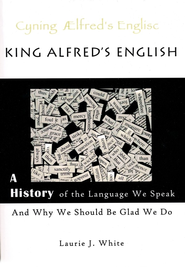Noah was a righteous man who obeyed God. No, he was a psychotic mess who heard voices and saw visions.
God destroyed the earth in a worldwide flood because mankind’s sins were so great. No, he flooded the earth because we were cruel to animals and were destroying our planet.
Well, which is it?
Welcome to this week’s high school writing prompt. Is it about the new movie Noah?
Yes. And no.
How are they the same? Different?
Many movies have been made loosely based on biblical themes and historical accounts, like the recent Noah. You’ve probably heard about or seen Ben Hur, The Greatest Story Ever Told, The Ten Commandments, Disney’s Prince of Egypt, and others. After viewing each one, maybe you have compared the movie with the the account in the Bible.

As an example, both the Bible and Prince of Egypt portray the burning-bush event and many other elemental events in Moses’ life. One area where they differ is that, according to the Bible account, Moses was eighty years old when he returned to Egypt, but in the Prince of Egypt he was looking pretty young and studly, maybe about thirty-ish. You can do the same with the recent movie Noah : Yes, there was a flood. No, Noah did not kill people.
What we’ve just done is compared and contrasted.
When you compare, you ponder similarities. When you contrast, you zero in on differences.
One method you can use to write compare-and-contrast paragraphs or an essay is first to make a list of all the similarities and one of all the differences. Then write about the similarities in one paragraph and the differences in another, connecting them with a transitional sentence.
You’ll find a good example of this method by clicking here. It’s a movie review of Noah, and in it Ken Ham, president of Answers in Genesis, writes about similarities between the movie and the biblical account. That section of his review begins like this: “There are four elements from the biblical account that you will recognize in this film.” Then he writes about the differences, which begins under the heading Twisting the Biblical Account.
Why does he save the differences for last? Because those are the most important to him, the elements of the Noah movie where the writers did not follow the biblical account.
For another tutorial on compare-and-contrast writing, with free worksheets, click here. >>
Now it’s your turn: Choose from the following two options.
-Option One: Choose a movie and review it based on how it lines up with biblical truths, values, or commandments. It doesn’t have to be a religious movie. It can be any movie. Some of the movie’s characters and events will agree with biblical values and some of them will support another viewpoint.
Before you write your compare-and contrast review, make a list of ways in which the movie is similar to biblical values or truths. Then make a list of ways the movie is different from biblical values or truths.
Decide which is more important to you: the similarities or the differences. If the similarities are more important, end your review with them. If the differences are more important, like the movie review by Ken Ham, end with them.
When you write, keep the similarities and the differences in separate paragraphs, connecting them with a sentence to transition your readers from the similarities to the differences (or from the differences to the similarities).
Don’t bother writing an introduction and a conclusion unless you are really into writing this and want to finish it up as an essay.
-Option Two: Choose a movie written from an original book you’ve read. Make a list of the ways the movie is similar to the book. Then make a list of how the movie is different from the book.
Decide which is more important to you: the similarities or the differences. If the similarities are more important, end your review with them. If the differences are more important, like the movie review by Ken Ham, end with them.
When you write, keep the similarities and the differences in separate paragraphs, connecting them with a sentence to transition your readers from the similarities to the differences (or from the differences to the similarities).
Don’t bother writing an introduction and a conclusion unless you are really into writing this and want to finish it up as an essay. If you do write a conclusion, include why you think the differences are important, how they change the original story, if you are satisfied/dissatisfied with the changes, why you think the movie writers made the changes, and so on. In other words, draw conclusions.
The point of a compare-and-contrast article is not only to compare and contrast but also to make observations and draw conclusions.











